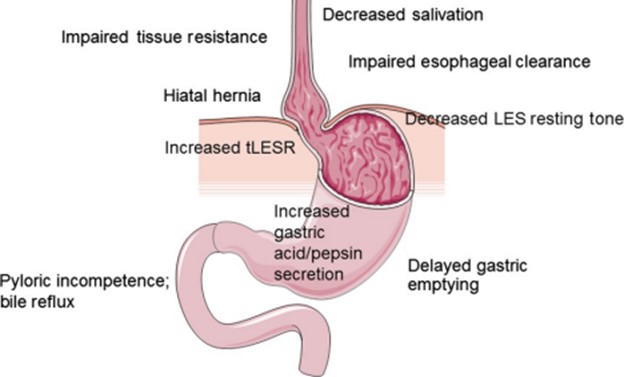The nurse determines that teaching for the patient with peptic ulcer disease has been effective when the patient makes which statement?
"I have learned some relaxation strategies that decrease my stress."
"I should stop all my medications if I develop any side effects."
"I should continue my treatment regimen as long as I have pain."
"I can buy whatever antacids are on sale because they all have the same effect."
The Correct Answer is A
Effective teaching for a patient with peptic ulcer disease focuses on promoting understanding and adherence to the treatment plan, as well as addressing lifestyle modifications that can help manage the condition. Stress reduction is an important aspect of ulcer management, as stress
can exacerbate symptoms and delay healing. If the patient acknowledges learning relaxation strategies that decrease their stress, it indicates that they have grasped the concept and are likely to implement it in their daily life.
It is crucial for the patient to understand that any potential side effects should be reported to the healthcare provider, who will then determine the appropriate course of action. Abruptly stopping medications without medical guidance can have adverse consequences. While pain relief is an important goal, the treatment for peptic ulcer disease typically involves addressing the underlying cause, such as Helicobacter pylori infection or reducing stomach acid production. The patient should follow the treatment regimen as prescribed by the healthcare provider, even if they experience pain relief, to ensure proper healing and prevent ulcer recurrence.
Different antacids have different formulations and ingredients, and they may vary in terms of effectiveness and duration of action. It is important for the patient to consult with their healthcare provider or pharmacist to determine which antacid is most suitable for their specific needs.
Nursing Test Bank
Naxlex Comprehensive Predictor Exams
Related Questions
Correct Answer is C
Explanation
0.9% Sodium chloride is a balanced isotonic solution that closely resembles the electrolyte composition of the extracellular fluid. It is commonly used to treat dehydration because it helps restore fluid volume and electrolyte balance in the body.
5% dextrose in Lactated Ringers: This solution is typically used for fluid and electrolyte replacement in patients who have significant fluid losses or imbalances, but it may not be the best choice for dehydration alone.
0.45% sodium chloride: This solution, also known as half-normal saline, has a lower concentration of sodium chloride and is often used for patients who require hypotonic fluids. It may not provide enough electrolyte replacement for a dehydrated patient. 3% Normal Saline: This solution has a higher concentration of sodium chloride and is typically used for specific indications, such as severe hyponatremia or in critical care settings. It is not the first-line choice for treating dehydration.
Correct Answer is ["A","B","C","D","E","F"]
Explanation
1. Alcohol: Alcohol can relax the LES, leading to increased reflux symptoms. 2. Chocolate: Chocolate contains compounds that can relax the LES and contribute to reflux symptoms.
3. Peppermint: Peppermint, including peppermint oil and peppermint-flavored foods, can relax the LES and worsen reflux symptoms.
4. Citrus fruits: Citrus fruits and juices, such as oranges, grapefruits, and lemons, are acidic and can irritate the esophagus, exacerbating GERD symptoms.
5. Cola sodas: Cola sodas, including both regular and diet varieties, can contribute to reflux symptoms due to their carbonation and acidic content.
6. Fatty foods: High-fat foods, such as fried foods, fatty meats, and full-fat dairy products, can delay stomach emptying and increase pressure on the LES, leading to reflux.

Whether you are a student looking to ace your exams or a practicing nurse seeking to enhance your expertise , our nursing education contents will empower you with the confidence and competence to make a difference in the lives of patients and become a respected leader in the healthcare field.
Visit Naxlex, invest in your future and unlock endless possibilities with our unparalleled nursing education contents today
Report Wrong Answer on the Current Question
Do you disagree with the answer? If yes, what is your expected answer? Explain.
Kindly be descriptive with the issue you are facing.
